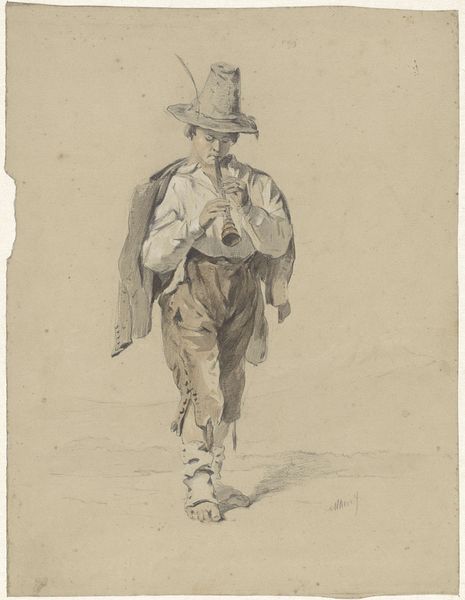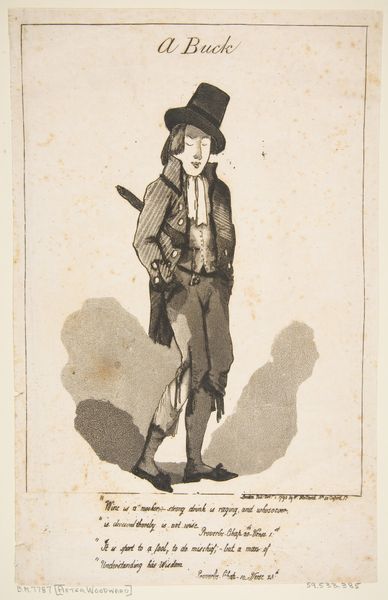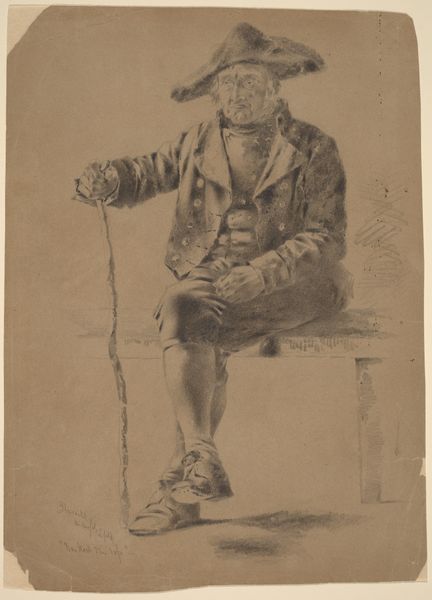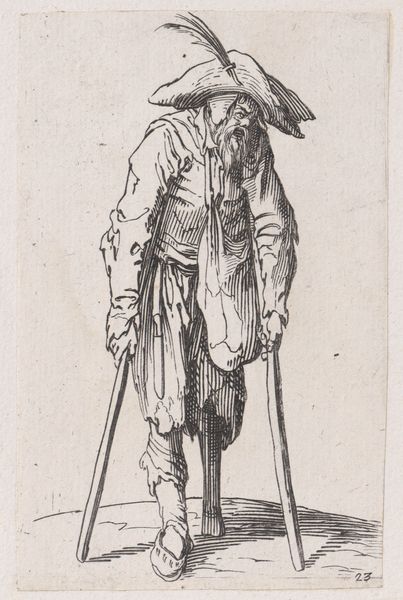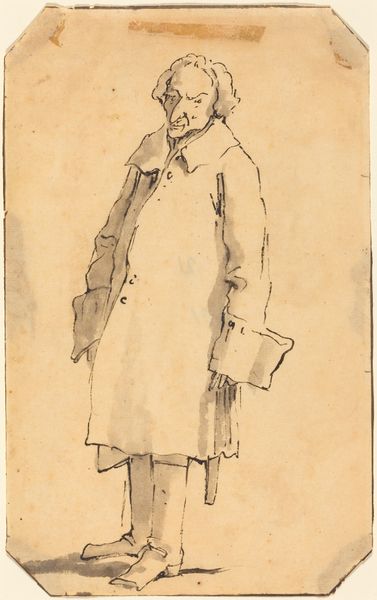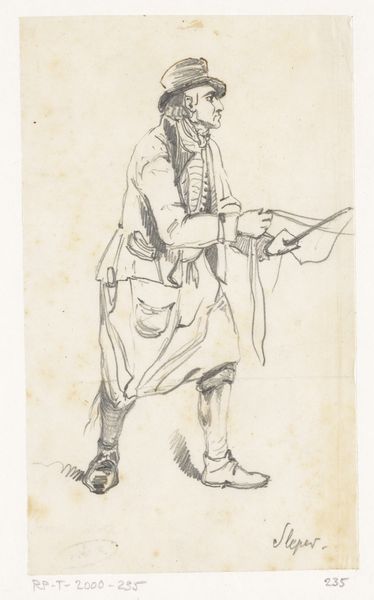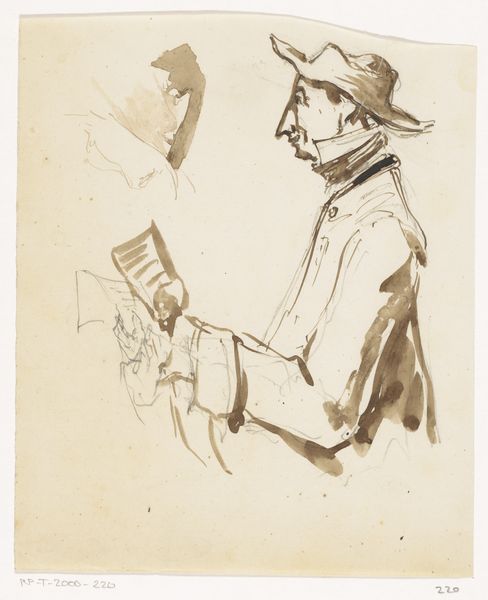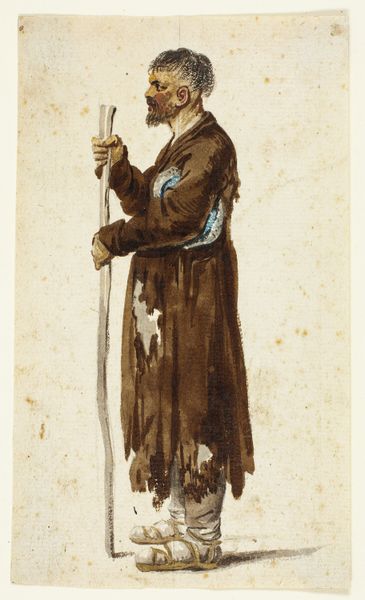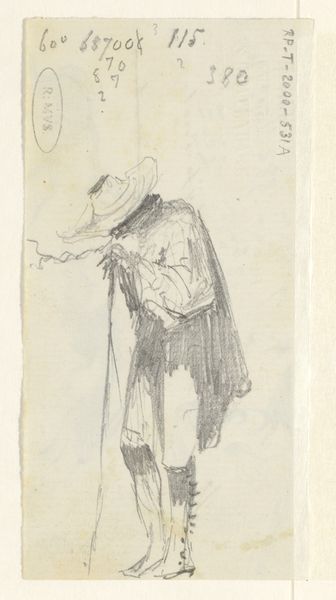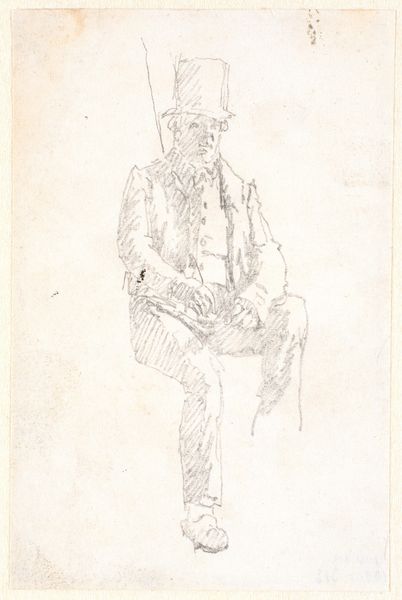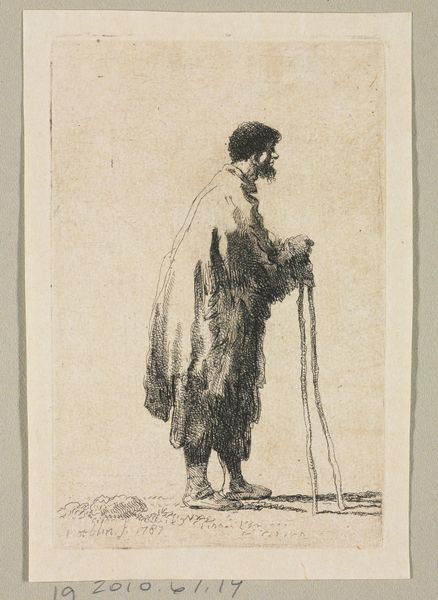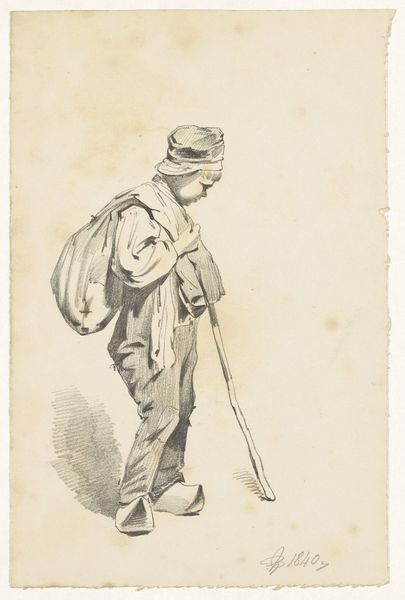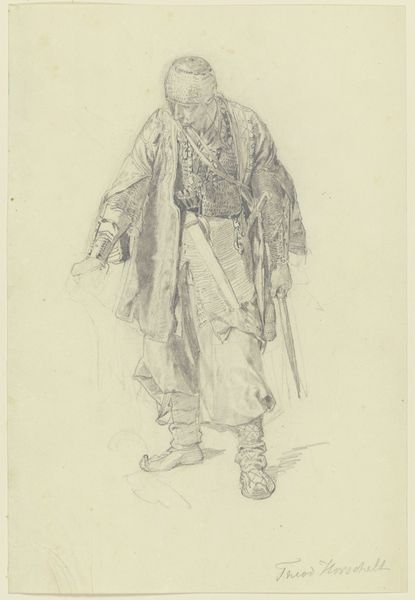
Dimensions: height 101 mm, width 63 mm
Copyright: Rijks Museum: Open Domain
Editor: This is "Man met wandelstok," or "Man with Walking Stick," by Johannes Tavenraat, created sometime between 1840 and 1880 using ink and watercolor. It feels almost like a caricature, but there's also a certain vulnerability in the figure's stoop. How do you interpret this work? Curator: Well, it's easy to see this simply as a genre scene, depicting everyday life. But let's consider the social context of 19th-century Europe. What does it mean to portray an aging man relying on a cane? Who had access to such mobility aids, and what did that signify about class and ability? Is the work potentially referencing, or perhaps even subtly critiquing, the lived experience of aging populations at that time? Editor: That's an interesting angle. I hadn't really considered the socio-economic implications of something like a walking stick. Is there something specific about the Romanticism movement that would invite those readings? Curator: Romanticism valued individual emotion and experience, often highlighting those on the margins of society. Could Tavenraat be drawing attention to the often-overlooked realities of aging and dependence, positioning this figure as a symbol of societal neglect? It’s a starting point for a deeper conversation. Consider also the medium – the looseness of the watercolour. Does this lend itself to express fragility? Editor: It certainly emphasizes a kind of ephemerality. Thinking about it now, the fluidity almost reflects the instability associated with aging and reliance on external supports. Curator: Precisely! So, instead of just a simple portrait, we might see this as a quiet commentary on the experience of aging and perhaps the limitations placed upon certain individuals within the context of 19th-century society. Editor: That shifts my perspective entirely! I’ll definitely keep that in mind. Thank you! Curator: It's all about layers of interpretation, and continually questioning our own assumptions.
Comments
No comments
Be the first to comment and join the conversation on the ultimate creative platform.
